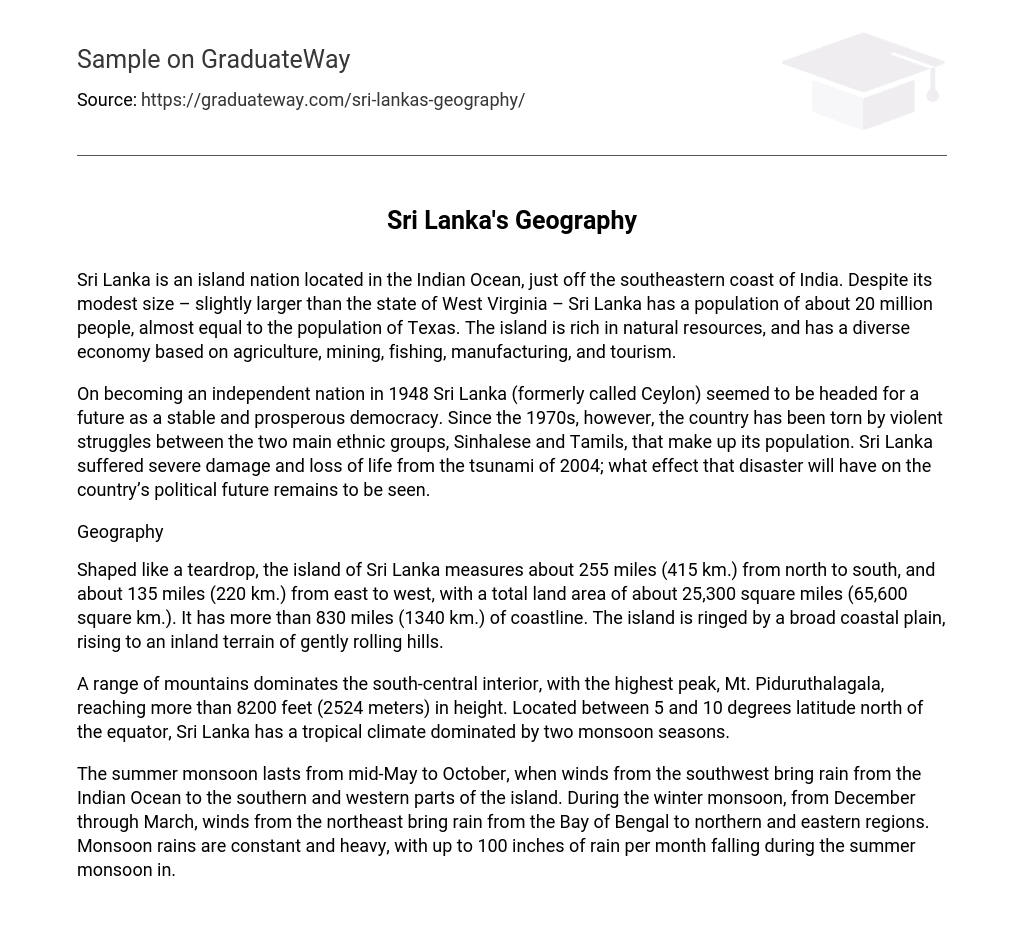Sri Lanka is an island nation located in the Indian Ocean, just off the southeastern coast of India. Despite its modest size – slightly larger than the state of West Virginia – Sri Lanka has a population of about 20 million people, almost equal to the population of Texas. The island is rich in natural resources, and has a diverse economy based on agriculture, mining, fishing, manufacturing, and tourism.
On becoming an independent nation in 1948 Sri Lanka (formerly called Ceylon) seemed to be headed for a future as a stable and prosperous democracy. Since the 1970s, however, the country has been torn by violent struggles between the two main ethnic groups, Sinhalese and Tamils, that make up its population. Sri Lanka suffered severe damage and loss of life from the tsunami of 2004; what effect that disaster will have on the country’s political future remains to be seen.
Geography
Shaped like a teardrop, the island of Sri Lanka measures about 255 miles (415 km.) from north to south, and about 135 miles (220 km.) from east to west, with a total land area of about 25,300 square miles (65,600 square km.). It has more than 830 miles (1340 km.) of coastline. The island is ringed by a broad coastal plain, rising to an inland terrain of gently rolling hills.
A range of mountains dominates the south-central interior, with the highest peak, Mt. Piduruthalagala, reaching more than 8200 feet (2524 meters) in height. Located between 5 and 10 degrees latitude north of the equator, Sri Lanka has a tropical climate dominated by two monsoon seasons.
The summer monsoon lasts from mid-May to October, when winds from the southwest bring rain from the Indian Ocean to the southern and western parts of the island. During the winter monsoon, from December through March, winds from the northeast bring rain from the Bay of Bengal to northern and eastern regions. Monsoon rains are constant and heavy, with up to 100 inches of rain per month falling during the summer monsoon in.





